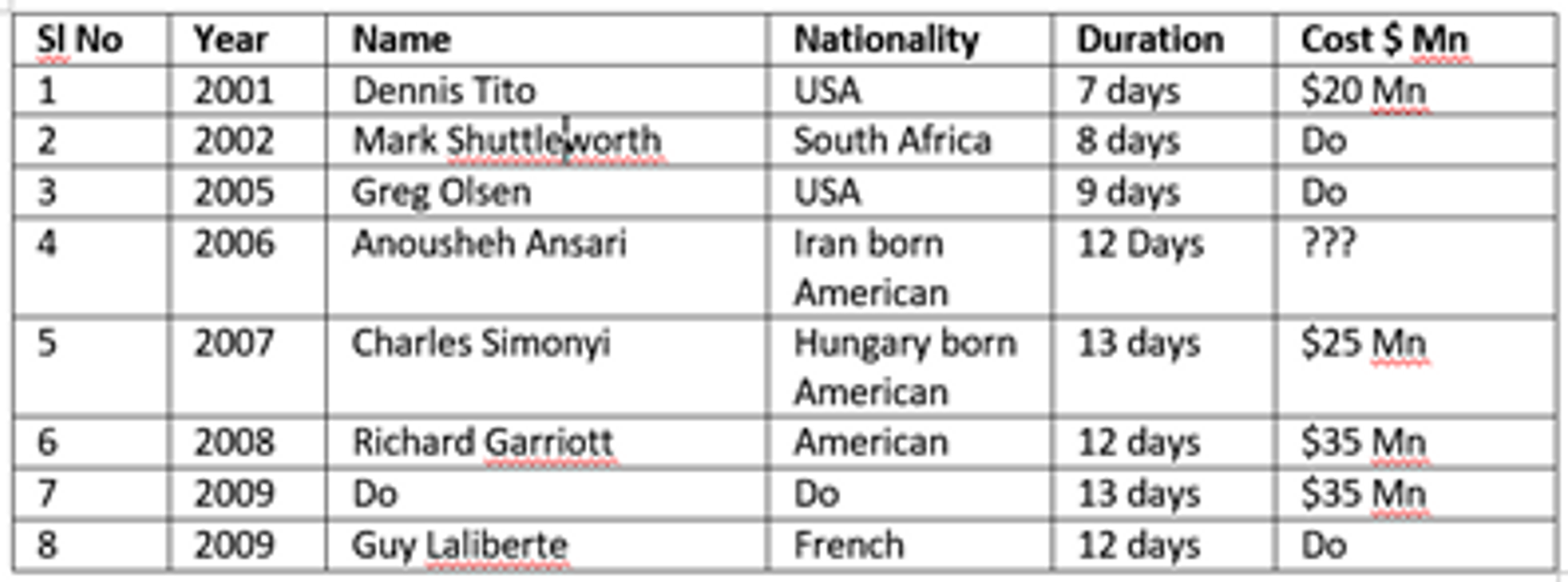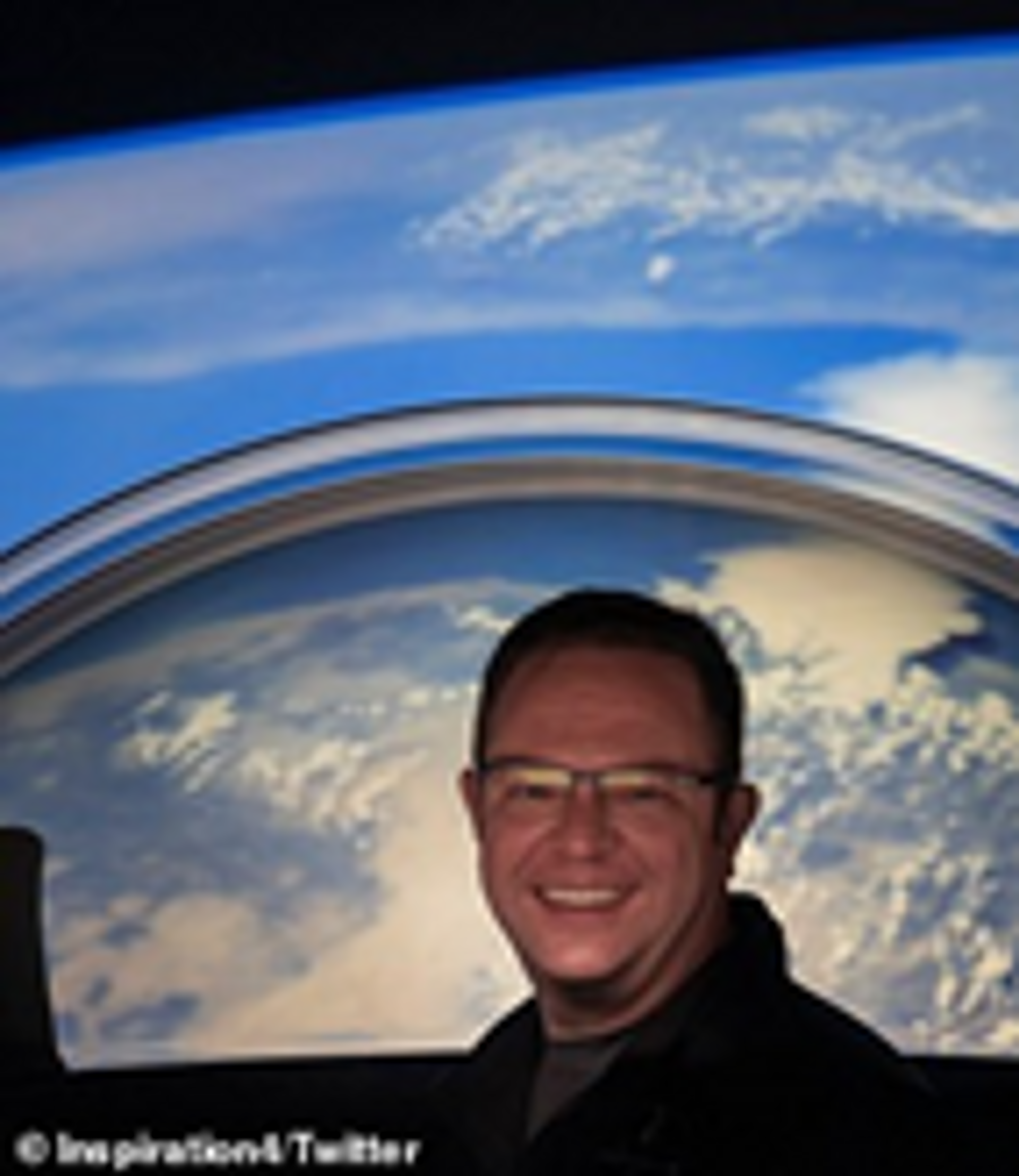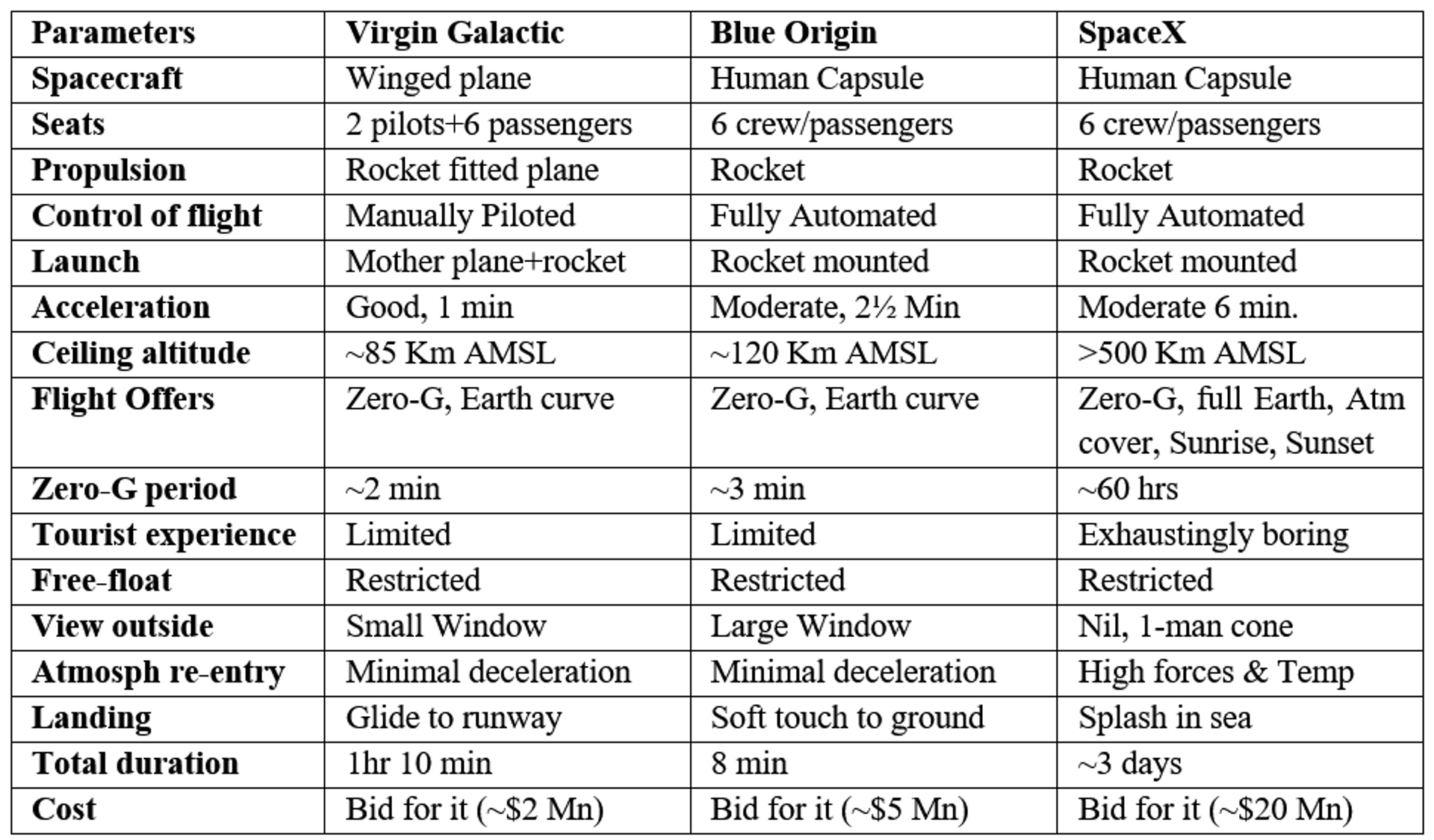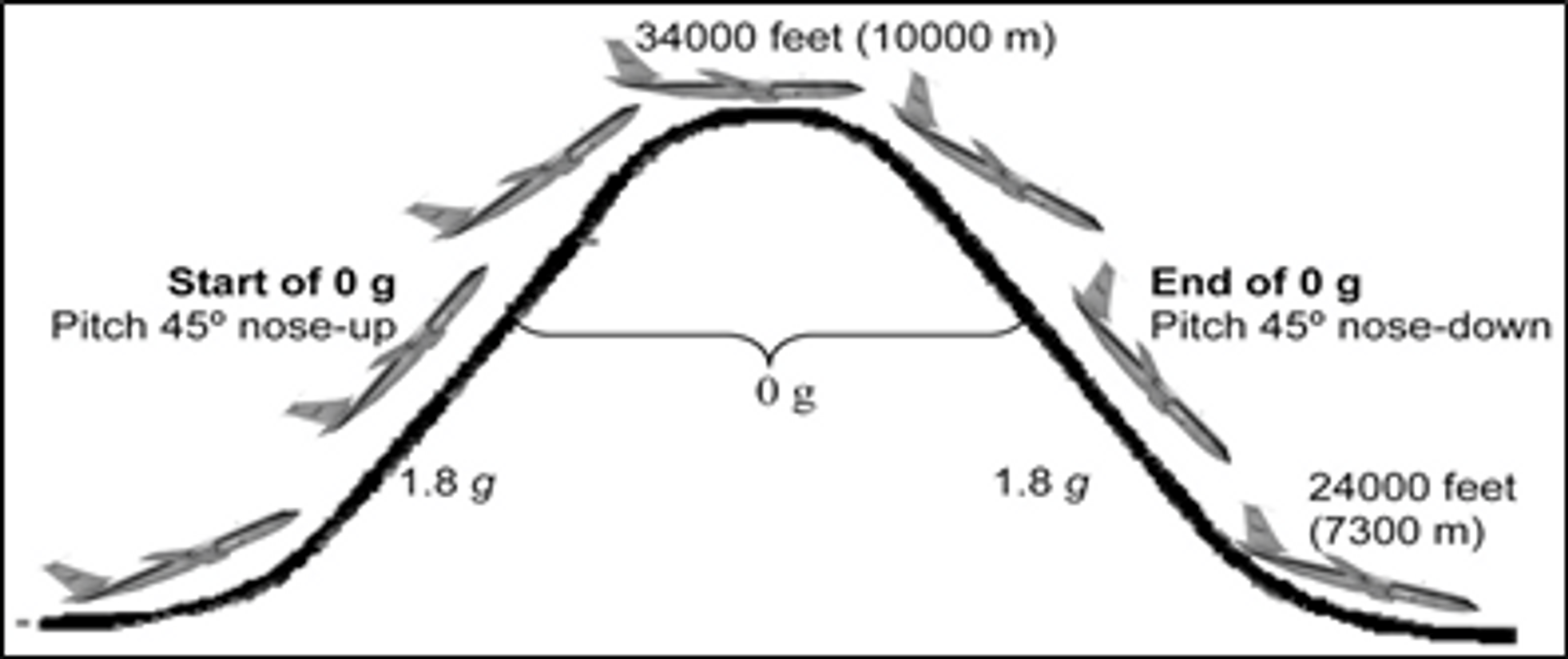
Race for Space Tourism
Tourism to Space is heating up. First Virgin Galactic’s bit hurried flight, next Blue Origin and now SpaceX; no one wants to lag behind in Space-Tourism. Each wanted to offer their passengers / clientele with more than the other. Richard Branson’s Virgin Galactic offered a flight to near 85 Km above the surface of the Earth with near 2 min of microgravity followed closely by Jeff Bezos’s Blue Origin taking them above the Karman’s line with ~3 min of microgravity; but recently, Elon Musk’s SpaceX carried the space-tourists to >500 Km above the surface of the earth as if each was trying to outdo the other…and why not? It is million-dollar business, the fortunes for most and peanuts for some, the billionaires. In the first two ventures, company’s CEOs were the VIP passengers, worthy of billions and in the last, it was Jared Isaacman, another billionaire who had chartered the flight along with 3 others. Travelling to the space may have immense technical and health related challenges for the astronauts / Cosmonauts. However, such trips have enormous glamorous impacts for the world population. Hence, each individual heading to space is viewed no less than the Heroes of the cinema. It becomes a dream of many people to travel to space.
Space Tourism has great attraction esp for the rich and Russian Roscosmos have partly cashed upon it in the past as shown in the table below. Since 2001, the lucrative Russian space tourism program has enabled many “private spaceflight participants” to make their space trips. They paid in excess of $20 million for flights aboard Russian Soyuz crafts, brokered by Virginia-based Space Adventures…the last tourist paid a reported $35 million for his trip. All those trips were to the Space Station; followed almost the same training protocol as for the other mission specialist cosmonauts… so as to perform some scientific tasks essentially to justify their inclusion to the program.
Tourist’s minimum requirements
Space Adventure/Tourism customers have some minimum requirements that any passenger willing to spend fortunes would mandate. On the other hand, the space agencies may competitively offer a better package / options of a near-guaranteed safe return, with one or more of the following experiences…
- The experience of Microgravity…unhindered Free Floating …without any obstacle.
- Being able to see the curvature of the Earth with its bluish Atmospheric cover.
- Being able to see the Sunrise or Sunset which is totally different experience.
- Viewing the changing perspectives of the Earth under the day and the night
- Special occasions and celebrations in space…propose, marry, honeymoon and so on.
- Situational demands of viewing the changing perspective of the Earth under Solar or Lunar Eclipse or any other celestial events.
- Sufficient exposure time under microgravity for short scientific experiments.
- Other innovative ideas will surely come-up for space recreational objectives in the future.
The Players in Space tourism
Leaving the Soyuz flights of the Roscosmos in which some passengers were taken to space-stations in the form of payload-specialists, the space sector was opened for tourism through sub-orbital flights recently only. All agencies used their re-usable spacecraft…both launcher and the capsule/Human module. All three had different landing techniques. One landing in a gliding craft on to a runway, another capsule making a soft-landing on the planes and the third making splash in to the sea.
The Virgin Galactic has the reusable spacecraft named Virgin Space Ship (VSS) Unity mounted within the dual wings of their aircraft Virgin Mother Ship (VMS) Eva. VSS Unity after release from VMS Eva at around 45-50 KFt AMSL is propelled by a rocket to the edge of the space to around ~85 Km AMSL. On the other hand, Blue Origin Spacecraft is fully reusable rocket propelled in 2-stages. The former is designed to go below Karman’s line with a total microgravity exposure of about 2 min; the latter could go up to ~120 Km AMSL or so with a total microgravity exposure of about 3 min. These two offered the actual microgravity / space exposure in a sub-orbital flight. Sub-Orbital flights have the advantage that the atmospheric re-entry is smooth without subjecting the craft to very high temperatures. However, it also has the disadvantage that you may not see the Sunrise, Sunset, Changing perspectives of our planet. The details of their flight schedules, comparative performances as well as all pros and cons have been published earlier by this magazine hence, not being repeated here (The Counterviews; Issue 3:08; https://articles.thecounterviews.com/articles/emerging-space-tourism-a-scientist-view-point/).
The first flight of both the above players had some concern areas as brought out in the above article. Virgin Galactic also revealed some operational shortcomings. The Federal Aviation Agency (FAA) observed that the rocket ship ‘veered off course’ during its descent back to New Mexico outside the air traffic control clearance area granted to them. As a result, it has been banned from further flights until investigation and correction of the causative factor.
SpaceX entering the space-tourism arena recently must have been an afterthought than by their main objective. It is primarily designed to go in to Earth’s orbit for docking to the ISS at 400+ Km above the surface. In the tourism flight they however, planned to outdo the other competitors by taking the tourists/passengers to >500 km above the surface, about 100 km above the ISS orbit and remain in orbit under microgravity for nearly 3 days.
The SpaceX ventures are more of a shuttle service to the International Space Station (ISS) to ferry the logistics and crew. Their space Module ‘Crew Dragon’ is fully automated basically to dock to the ISS. It is designed to withstand high temperatures of the re-entry to the atmosphere at orbital velocities. It runs all risks of orbital and space-flights unlike the sub-orbital flights of the others. They have probably tried to compete and cash on to the commercial space tourism as an afterthought.
SpaceX uses the same space vehicle that they used for transporting the NASA crew to the ISS. They used their Falcon 9 rocket essentially meant to send the space capsule in to the orbit so as to dock to the ISS at 400 Km plus altitudes. Since the Crew Dragon module for tourism was modified with the docking nose cone changed in to a Perspex capsule allowing 360 deg visibility all around in the horizontal plane to have unhindered vision all around except underneath. This was clearly a plus point in SpaceX tourism and all crew must gave taken turns to be photographed.
Unlike the SpaceX's Crew Dragon shuttle service of docking with the ISS, the Blue Origin capsule had no qualified astronaut on board to pilot the craft. SpaceX's fully automated Crew Dragon Space Capsule mandatorily has redundancy of manual override by the astronauts to take over the controls in case the automation failures/deviations. Their training involves a stringent "Pilot-in-loop" of the automated crew dragon. Blue Origin capsule has very little of it, if at all. Yes, there is a qualified crew to help the passengers with limited assistance. The capsule itself has no override controls for the flight except the emergency separation from the propelling rocket in its initial phase of ascent. The passengers of the spacerides in either Blue Origin or Virgin Galactic have no clue of handling of the spacecraft, yet they are 'designated as astronauts' by the tourism agency to attract the rich aspirants. Many of the professionals in Space Exploration feel it as a dishonour to the actual astronauts/cosmonauts who earn this status after the years of a highly rigourous professional training.
Tourist’s Pleasure
Prolonged training for any tourist is bothersome. They undertake the trip for pleasure…away from the arduous structured training or responsibilities that they would like to careless. Similarly, they would love to have a couple of orbits of our planet to witness the Sunrise/Sunsets, the changing perspective of its surfaces but long duration exposures beyond few hours will become bothersome. Prolonged stay under microgravity is marred with many problems that may exceed the pleasure threshold. Delayed Space Motion Sickness (SMS), initial loss of appetite, problems of toiletries, inability to bathe or looking after the body hygiene and a highly disturbed sleep are some of the events that become bothersome to the tourists. It is believed that non-functional toilet for 3 days of stay were reason for worries.
For space-tourists, a swift travel, enjoying the pleasures that they wanted to experience followed by a safe return is all that they are inclined to undergo. Surely prolonged trip of 3 days that SpaceX had offered, may not suit all space tourists in general. Not many of them will be keen to endure months of training for becoming a space tourist…and all these at their own costs.
There are some other players too in Commercial Space ventures. These include Boeing Company’s paid trips to the International Space Station (ISS) in their ‘CST-100’ Starliner spacecraft, which is yet to start operations. It may not be long before the Chinese and Russians too come-up with their own or joint plans for commercial space tourism. They already have the technologies for it.
A comparative look at the three agencies offering the space tourism is provided in the table below: -
The Tourist Spacecraft
The design of tourist spacecraft will be challenging for the sake of technological simplicity and tourist convenience. It has to be also cost effective, competitive with others, with or without re-usable vehicles. Presently all 3 agencies offering space tourism has some level of re-use technologies. Virgin-Galactic has an airplane to take them to some height before the re-usable rocket propels their plane to the space. Blue origin and SpaceX both have reusable 1st stage rocket and Human Modules. These are fully computerized and partly remote controlled from the ground station where as the former is piloted back to the landing runway.
The human module must have redundancies of robust Life Supports. Loss of cabin pressurization in space flight without pressure garment will be fatal. This may happen due to structural failure of any reasons including malfunctions/failure of cabin pressurization system or impact with high speed space debris or meteorites above atmospheric blanket. A full pressure suit with pressure helmet will be mandatory. This also makes it imperative to provide pressure ports / hoses to all seats for connecting at a short notice when required. These chairs may also have stowage of pressure helmet that could be taken out with ease when required. The aim of these Pressure Suits will be to bring the passengers safely below 39K ft AMSL when 100% O2 breathing will suffice. These tourist crafts may also have a high resolution CCTV to record the memorable moments from different angles and telecast it live to the ground control if possible.
The Risk Factors
Any space venture does have some inherent risks. Surely Failure Mode and Effects Analysis (FMEA) exercise would have been undertaken and safety features incorporated in all human ventures with redundancies. All life support measures have special fail-safe redundancies too, yet failures may take place threatening the life of the occupants and that is considered as inherent risk. This risk could be considered part of these space adventure. Any exigency beyond the FMEA must be considered as failure as a result to design inadequacies and those must not jeopardise the human safeties. It can only be hoped and believed that all current players in the space-tourism would have effectively ensured that for the sake of human safety, there is nothing on their part that has not been attended to.
Safety measures for Tourists
The tourists may prefer being in casuals for convenience but some bare minimum of protective clothing will be desirable. They also need to be medically fit to withstand the microgravity and the allied stresses. A pre-screening to rule out disabilities incompatible with microgravity must be done. A simple but effective full pressure suit will be a preferred garment for all. Pressure helmet could be donned only if there are threats.
Some bare minimum indoctrination/training have to be imparted to don the full pressure suit under emergency. They all should be able to take out their pressure helmets from their chairs stowage and put-on within short time. They all must be made to connect the hose to the suit a few times before they could be expected to do it themselves under emergency. A feel of pressure suit inflation with pressure breathing must also be given. Similarly, some briefing may also have to be done to face the various short-term problems of microgravity and space exposure.
Safe landing without injuries is mandatory. The space(aero)plane presently glide to land at designated runway. It may be appropriate for the agencies to keep some minimum fuel in the craft for final maneuverability. Accordingly, the tourist space capsule may like to have some minimal horizontal control to avoid landing on dangerous features on ground such as wall, high voltage lines or its poles just in case of drift. These features will increase tourist confidence in safe landing.
Microgravity experience in Commercial Airplanes
Should some passengers wish to experience a short time microgravity without going to Space at prohibitive costs, airlines may take lead to convert one of their passenger jets for parabolic/Keplerian flights of 20-25 seconds at a time. These are special maneuvers when the aircraft is flown 450 nose-up imposing about 1.8 +Gz at safer altitudes and then pitched 450 nose down to experience zero-G of 20-25 sec at each maneuvers to recover the aircraft at safe heights. If required, multiple parabolic maneuvers could be undertaken in a single flight.
These wide body airplanes with limited and pre-screened passengers are ideal to experience microgravity and unhindered free floating without going to Space and spending fortunes. This could also serve as training platform for the selected astronauts/cosmonauts and also short-time zero-G test platforms for equipment. These planes need to be modified for the seats to be folded to the floor or the walls so as to have unhindered space for free floating. There could be some small brackets to hold that may be useful for some to maneuver themselves while free floating. Unlike space flights, no special personal safety equipment or garment is required for the tourists except a small disposable vomiting bag that as such is provided in all passenger aircrafts.
These planes must limit the weight of the luggage in the overhead compartment for it to withstand the higher +Gz during pull-up/pitch-up. The jet engines are usually certified for operations under zero-G also but may require some additional checks to doubly satisfy the safety of operations. Flight-safety regulators must be taken in to confidence.
Concluding Remarks
Space Tourism has now come to stay. Different agencies would offer different numbers of experiences…mostly offering sub-orbital flights of few minutes but some offering varying orbiting experiences too. Although the costs of the flights will vary with varying agencies offering it, it is going to be fortunes for many but some may not mind spending. While a few minutes of Zero-G experience with limited viewership of the curvature of our planet and its blue atmospheric cover, the Sunrise and Sunsets will be something very unique that most if not all agencies would like to offer to their tourists. The tourist going for pleasure may not like a long training schedule unless for some purpose. We are likely to witness great transformation in the space tourism as the technologies and mature and the clientele demands increase for more and more expectations. However, if someone wants to experience of microgravity, it could be done in an airliner without going to space, without spending fortunes.





